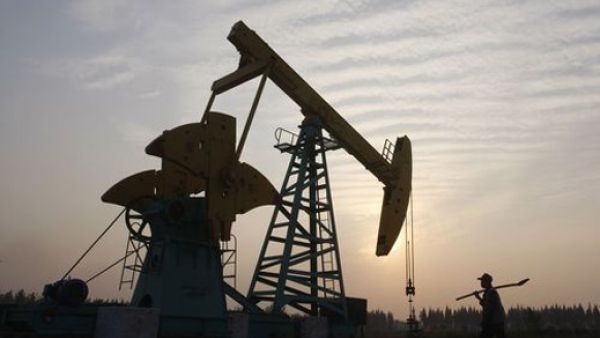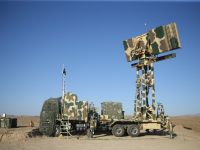While euphoria over the ongoing shale revolution and the energy independence of the Americas continue, yet, there are people - cautioning and asserting - the phenomenon is short-lived and the world would continue to be dependent on the energy- rich Middle East in medium to long term.
At the recently held EIA Energy Conference in Washington - while some heavyweights were heard urging Washington to capitalize on the moment and use the newly found asset base to advance its political and foreign policy objectives, an influential dissenting voice was that of Maria van der Hooven, the IEA Executive Director, asserting the US energy security “Golden Age” is an illusion.
Ever since generating bold headlines globally when Fatih Birol, chief economist and director of Global Energy Economics at the International Energy Agency in Paris, pointed out while presenting the IEA World Energy Outlook 2012, that the US was on its way to overtake Saudi Arabia in crude output, the agency has been attempting to tame expectations. A year later, unveiling the WEO-2013 last November in London, Birol insisted on terming the US shale “a surge, rather than revolution.”
“I think not only in the United States, but also in Europe, many people believe that after the shale revolution, the importance of the Middle East is diminishing,” Birol told Houston Chronicle earlier this year. “I think this is not only wrong from an economic point of view, but also from a policy point of view. It is misleading.” The result of downplaying the significance of the Middle East could be substantial, he underlined.
“There is one major resource base in the world which could meet the growth in the global oil demand, which is the Middle East,” he said. “Without the Middle East, we will not be able to meet the growth, specifically in Asia.”
The shale boom has made the United States less dependent on imported crude, but oil produced from Middle East still plays a fundamental role in meeting energy demand, Andrew Lipow, president of Houston-based consulting firm Lipow Oil Associates too was quoted as saying.
Jim Burkhard, head of global oil market research at HIS, too agreed. The role of Middle East oil has not declined as a result of growing production in the United States. “What's happened in the US and North America overall is vitally important to the world oil market, but that doesn't mean that the Middle East is suddenly irrelevant,” he told the newspaper.
There are also questions about the sustainability of the shale revolution. North Dakota is an example.
It produced 30 million barrels of oil in April - as much as it had in all of 2004. That kind of growth is nearly unprecedented in the modern oil industry. But it’s also unsustainable, argues Ben Casselman. There’s little doubt that the Bakken Shale, North Dakota’s main oil-producing reservoir, contains billions of barrels of crude. The question is about getting it out. Wells drilled into shale rock like the Bakken decline especially fast, as much as 70 percent in the first year. That means oil production is a treadmill: The more they produce, the more they have to drill to keep up.
There are signs now North Dakota may already be struggling to stay on the drilling treadmill, Casselman writes. The number of drilling rigs operating in the state peaked in 2012 and has been trending down. So far, that decline has been offset by two other trends: Drilling is getting faster, meaning each rig can drill more wells, and drilling techniques are improving, meaning the wells themselves are getting better. Taken together, the trends add up to big gains in productivity. Yet there’s a practical limit to how long those gains can continue.
Morten Frisch of the UK-based MF Consultancy too has been suggesting to lower expectations, pointing to the falling rail shipments of Bakken crude. And though he concedes it is difficult to conclude at the moment if this drop has been caused by rail safety issues or a sharp fall in oil production, yet this is a development that needs to be watched.
Logistics is another major impediment to shale growth. There are already indications that rail transportation of the very light, high volatility and high vapor pressure Bakken crude oil could be running into difficulties. When a senior North Dakota Republican (Robert Harms) feels oil production developments are going too fast, production activities in the state could be slowed down for safety reasons, deduces Frisch.
A number of variables continue to impact the industry. The US undoubtedly has huge shale reserves, but it is impossible to be sure about their size. For example, in 2011 the Department of Energy claimed the Monterey Shale deposits in California harbored 15 billion barrel recoverable oil. However, a few weeks ago, the technically recoverable reserves from the deposit had to be reduced to a mere 600 million barrels.
Much also depends upon the prevalent crude market prices. Strong market prices support fracking. But if the price were to fall below $90, fracking may prove too expensive.
And in order to maintain output, producers would need to keep adding wells on a regular basis. This is because a shale well has a limited lifespan of around seven or eight years. Its output plummets after the first three years, deteriorating steadily thereafter. By contrast a conventional oilfield produces crude at a level that wanes slowly over the course of decades. Saudi Arabia's massive Ghawar field, for example, began production in 1951 and is still pumping out around 5 million barrels a day.
The IEA points out that the US shale industry will need to bring 2,500 wells into service every year to sustain the output of 1 million barrels a day of one of its main oil reserves in North Dakota. Some of these wells may require more investment than their predecessors, “a rising percentage of supplies...require a higher breakeven price,” the IEA points out.
Shale revolution needs to be on a regular watch. Unjust euphoria would only hurt investments in other energy-rich regions - including the strategically important Middle East.

“There is one major resource base in the world which could meet the growth in the global oil demand, which is the Middle East,” he said.







